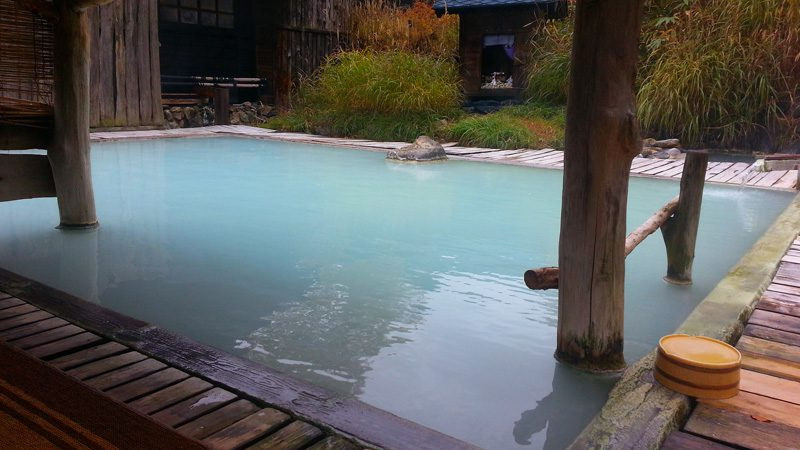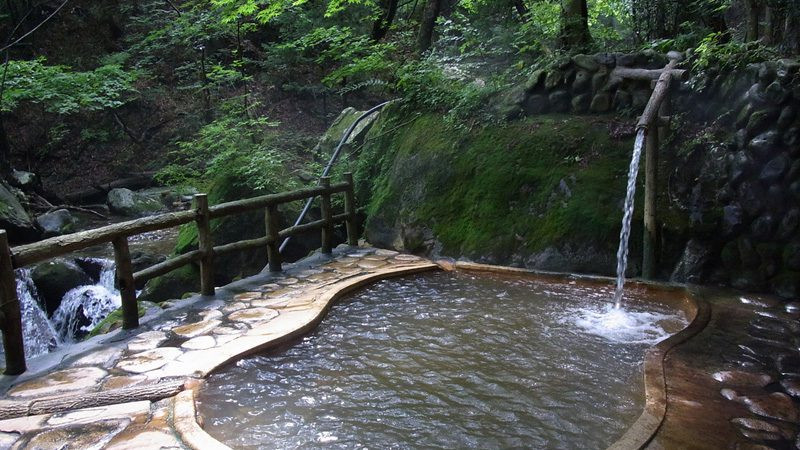Okay, I’ll admit it, the idea of visiting a Japanese onsen was a little daunting. Public nudity isn’t exactly my comfort zone. In fact, I tend to think the best time to be nude is when you’re fully dressed underneath layers!
So, the thought of stripping down and bathing in front of a group of strangers, potentially including fellow travelers I’d just shared breakfast with and would be making small talk with for the next week, filled me with a certain… apprehension. This apprehension, naturally, manifested as completely false bravado.
“The Onsen? Oh yeah, been there, done that, multiple times! Loved it! Didn’t see me? Must have been after I left. Seriously though, those traditional Japanese baths are amazing, right?”
For anyone unfamiliar, an onsen is a traditional Japanese bathhouse where you relax in naturally heated water for a deeply cleansing experience. To spare you any awkwardness and prepare you for what awaits in the steam, I’ve put together this guide. Let’s dive into the onsen experience.
1. Embrace the Nakedness: Everyone is in the Same Boat
It might seem obvious, but many first-timers, myself included, secretly hope they can wear a swimsuit. Nope. As our guide, Sylvia, gently put it, “You enter as you were born.” To clarify, that means completely nude, not necessarily crying.
I’ve heard some onsens have rules about tattoos, but at the onsen we visited in Koyasan monastery, my (perhaps questionable) tattoo didn’t raise any eyebrows. The elderly Japanese gentleman simply offered a friendly, if slightly puzzled, smile. Did I mention nudity is part of the experience? Let’s move on to practicalities.
 An outdoors onsen. Image Isriya Paireepairit, Flickr
An outdoors onsen. Image Isriya Paireepairit, Flickr
2. Navigating the Changing Room: Where to Put Your Stuff
Most onsens are divided into changing areas and bathing areas, often with a shower space too. You’ll first enter the changing room. Here, you’ll need to remove all clothing, shoes, wallets, watches – everything. Small baskets are provided for your belongings, usually placed on shelves. Leave your large towel here; you only need to take the small wash towel with you into the bathing area. Many people drape this small towel on their head while bathing.
I never quite figured out the purpose of the head towel – perhaps to keep cool? For clothing, I’d recommend wearing something easy to remove and put back on, like a simple robe. You don’t want to be wrestling with complicated outfits at this point.
3. The Pre-Bath Ritual: Cleanliness is Key
It’s considered extremely poor etiquette to jump straight into the bath (cannonballing is definitely out!). You’ll notice a row of small stools along the side, each with a showerhead and soap. The ritual is to sit on these stools and thoroughly wash yourself before entering the communal bath. And I mean thoroughly. I witnessed a Japanese gentleman meticulously washing himself in a way that reminded me of how hippos are scrubbed down at the zoo. But this thoroughness reflects the meticulous and respectful nature of Japanese culture.
As anthropologist Scott Clark noted, “to take a bath in Japan with an understanding of the event is to experience something Japanese. It is to immerse oneself in culture as well as water.”
 ‘Bath’ doesn’t really do it justice, does it? Image naitokz, Flickr
‘Bath’ doesn’t really do it justice, does it? Image naitokz, Flickr
4. Relax and Soak: Enjoy the Geothermal Waters
Now for the best part: sinking into the hot spring water. There’s a sense of liberation and relaxation that comes with being unburdened by clothing and immersed in the soothing heat. Historically, men and women bathed together, but nowadays, most onsens are gender-separated, a custom that became more common as Japan opened to the West during the Meiji Restoration. The water itself is wonderfully therapeutic. Typically heated to 40 degrees Celsius (104 Fahrenheit) or hotter from geothermal springs, onsen water must legally contain at least one of 19 designated mineral elements like iron or sulfur.
A few older Japanese men waved and smiled at me, saying something in Japanese I didn’t understand. I gave an awkward wave back, the universal sign for “I hope that wasn’t an insult, but I’m honestly not sure.”
5. Knowing When to Leave: Don’t Overdo It
You’ll quickly realize that an onsen isn’t an activity for hours on end. The water is genuinely hot. Staying in for more than 30 minutes might leave you resembling a cooked lobster. When you feel ready to leave, simply give a polite nod to your fellow bathers, step out, and head back to the changing room.
I must admit, after my first onsen experience, the initial anxiety completely disappeared. No one seemed concerned about nudity. The Japanese bathers were incredibly unselfconscious, and their relaxed attitude was contagious. I wouldn’t say I’ve been transformed into a committed nudist, but I definitely left feeling more comfortable in my own skin. Bring on bath time!
Ready to experience the onsen for yourself? Consider a small group adventure in Japan to make it happen.
